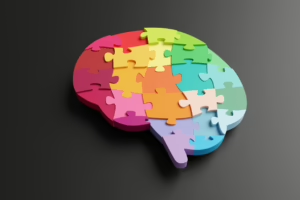OH practitioners have begun to incorporate artificial intelligence into their practices. As a survey by iOH showed, there are still concerns about the impact of AI on practice and provision, and where it could lead.
Artificial intelligence (AI), which was once a niche concept, will become a mainstream technology in 2024. This includes the use of AI by employers and employees.
A lively discussion on a UK OH Social Media forum sparked by the introduction of AI tools in a major organisation led to the formation of a volunteer special interest group, dubbed ‘AI in OH.’ The group was made up of academics and OH respondents. This article will show how they explored the challenges and potentials of AI for OH.
Early discussions were a mix of excitement and concerns. The excitement was centered on AI’s ability to improve OH access, to reduce administrative burdens and to give respondents more time for direct client care.
This optimism was however tempered by concerns about data security, job displacement and ethical issues. It became apparent that there was no specific guidance regarding AI’s safe, effective and efficient use in OH. This highlighted the need for industry-led direction.
The SIG , in a pioneering initiative, issued a consensus document that defined its mission as ‘Collaboratively improve the health of the workforce through the ethical and safe integration AI into occupational health strategies and practice’. Five key workstreams support this:
- Advocate for the wellbeing of workers
- AI risk management
- AI: Enhance the clinical value
- AI training for OH clinicians and
- AI opportunities: human touch, efficiency gaps, data insights, and information gaps.
The SIG surveyed UK OH respondents in order to determine the current and future use of AI.
The 35-day survey received 86 responses and was designed to evaluate AI software and tools in use, their purpose, governance processes, financing arrangements, as well as perceived challenges and opportunities. Below are some of the key findings that will help guide workstreams.
The group intends to repeat the survey periodically to track the development of AI usage within OH.
This effort highlights the importance of OH professionals being curious, informed and proactive when leveraging AI in order to enhance their practice intelligently and safely.
AI Tools: Current and Future Use
In our survey, more than half of respondents indicated that they used AI in various aspects of their OH practices. Interesting, fewer people had any plans to use AI. Among those who use and plan to use AI, the following are some of their uses:
- Research, writing and Editing
- Rewrite emails and reports to be concise
- Reports: Drafting and Clarifying
- Writing Clinical Notes
- Checking the language and tone of communications, mostly emails
- Minute-taking during virtual meetings
- Write policies, procedures, and questionnaires
- Summarize and research online educational materials and regulatory documents
- Finding rehabilitation plans
- Summary of medical conditions
- Employee leaflets
- Media and training materials
- Data collection with prediction
- Auditing, risk assessment and policy and procedure formulation are all part of the regulation and compliance process.
These themes are not representative of the entire OH workforce but they were common among all respondents. As a group, we gain insight from these themes, such as report writing and communication.
Nerys (2033) had predicted a much wider use of AI in OH. For example, risk management and reduction within the workplace. This does not seem to have happened yet. This could be due to the ethical concerns that were noted in the survey, and are discussed below. Also, Kenyon (2023 discusses insurance considerations.
Survey respondents identified a number AI-related benefits that could be realized in occupational health. Some common thoughts include:
- widening access to OH which will support SOM’s call to universal access (2020);
- Standardisation, consistency, and quality will reduce criticisms of OH such as those from The Disability Forum (2023).
- The respondents stated that they would identify missing information, i.e., data gaps not readily visible by the public, and analyse health surveillance data in order to “identify occupational disease pathways and interrupt them early”, and also analyze data from the Health Surveillance System.
This last point shifts the use of AI away from monitoring workplace risks, which El Helaly (2024 discusses to reducing employee risks, such as those seen with musculoskeletal disorder ( mileso, 2024).
The most common forecast is that time-savings and workflow improvements will be beneficial to OH. (DWP 2023). Michell’s 2024 explains that predicting improvements in evidence-based occupational health will be beneficial for workplace health. Another suggestion is to support those with neurodiversity. Also, an interesting idea would be a virtual assistant for workplace health! Educating employers is another novel suggestion which could significantly improve the effective utilisation of OH (DWP, 2023).
If we keep the human touch, manage obstacles and governance and read these suggestions to understand current uses then OH will be a success.
Governance and Obstacles
The survey found significant gaps in the governance, policies and procedures of AI in OH. The majority of respondents cited the lack of clear ethical and regulating frameworks as an important barrier to adoption. Concerns centered on data security and confidentiality, with respondents expressing concern about potential breaches, misuses of sensitive health information and inadequate safeguards within existing systems.
“Many [respondents] highlighted the risk of dehumanising OH care and stressed the need for AI not to replace expert human judgment, but rather to complement it.”
Another prominent theme was ethical considerations. Respondents stressed the importance of fairness, transparency and explainability when AI is used to make decisions. Many respondents highlighted the danger of ‘dehumanising OH care’, stressing that AI should complement expert human judgment rather than replace it.
Respondents were also concerned about the reliability of AI outputs. They feared errors, inaccuracies and “hallucinations”. This issue was further compounded by the lack of robust validation processes and consistent performance standards.
In addition, the survey identified a number of practical obstacles including limited AI tool access, inadequate training and high implementation costs. Many respondents emphasized the need for comprehensive governance structures that address both regulatory (hard) and ethical (soft) requirements. These frameworks must include data protection protocols and rigorous evaluation processes as well as education initiatives in order to build trust and confidence.
It is important to address these concerns in order to ensure the safe and successful integration of AI into OH. Literature highlights the importance of both soft (ethical and regulatory) governance for the adoption of AI in healthcare systems.
OH Tools and Platforms
The survey revealed AI tools that are used by the OH industry, including ChatGPT and Microsoft Copilot. Other AI tools include Perplexity Grammarly Apple Intelligence Apple Copilot Perplexity Grammarly Apple Intelligence The survey participants seem to use these tools for report writing, email refining, and data analyses.
There are several digital platforms in OH that utilize AI to assess risk, predict health risks, engage employees with digital reporting, and ensure compliance with regulations. Genny AI, Wellby and other AI-powered software automates documentation and risk analyses.
“What we have done is opened doors for conversation and identified, to a certain extent, how the general OH population views AI.”
Only 9% of people who do not use AI or are unsure plan to actively use AI in the near future. They cite cost, lack of data protection and governance as major barriers.
The UK is funding AI medical software with significant funds for research, diagnostics and innovation. This includes healthcare providers, researchers and tech companies.
In 2024, Innovate UK’s Small Business Research Initiative will allocate PS1.5 million to support AI-driven software development for OH. This funding supports projects such as cloud-based occupational healthcare platforms that use AI to monitor trends in health and detect early signs.
Keir starmer, the UK’s prime minister, recently outlined the government’s desire to use artificial intelligence to “turbocharge economic development in the UK” and to kickstart a “decade of national renewal”.
However, there is still a limited awareness of UK government funding, including Innovate UK grants among OH professionals.
As adoption grows, there are challenges such as resource limitations, regulatory obstacles, and scepticism. To unlock AI’s potential in healthcare, successful adoption requires clear frameworks and practical integration.
Survey Overview
Despite the fact that the respondents were diverse in terms of their experience, job, and the occupational health services they provide (for instance, in-house, OH providers, and self employed), the attitudes towards AI are similar.
There were some similarities in the job types, roles, service delivery, and experience levels. The obstacles and opportunities across the groups can be classified into two categories: those who use AI or plan to do so, and those not using AI or who are uncertain.
Clustering shows complex concerns against a background of rapid change.
Conclusions
Our conclusion is the beginning. We haven’t yet reached our goal as a working group. We have opened the door to a conversation, and we’ve identified, to a certain extent, how the general OH community views AI.
It is necessary to conduct further surveys and have a more focused discussion, with a focus on achieving the goals outlined in this consensus statement.
Subscribe to our weekly HR news and guidance
Every Wednesday, receive the Personnel Today Direct newsletter.



